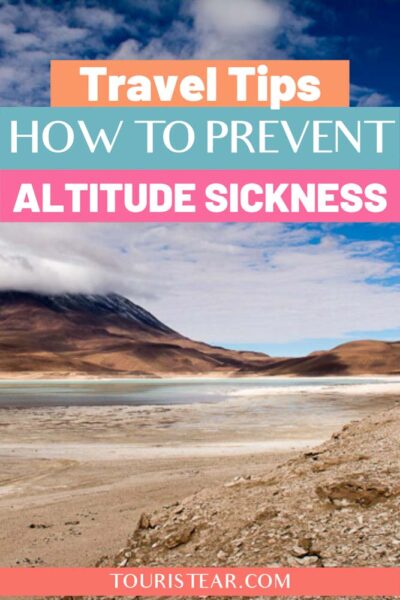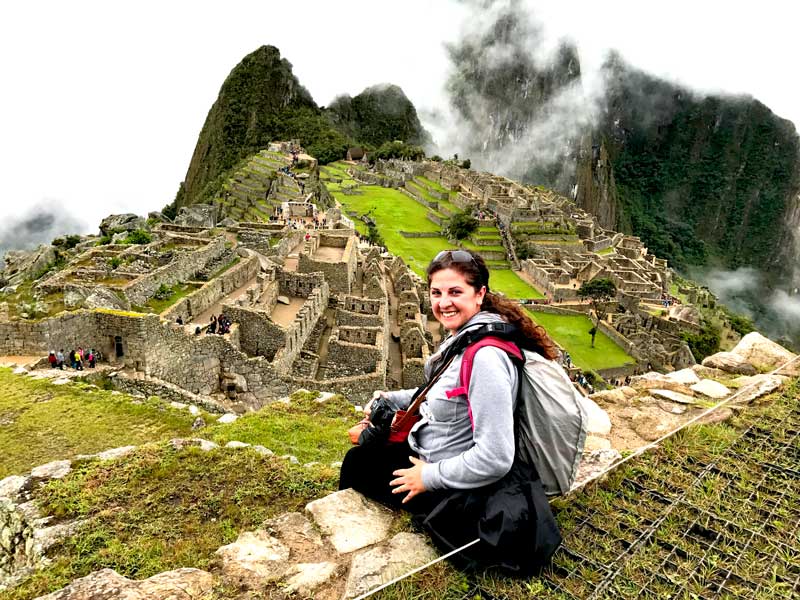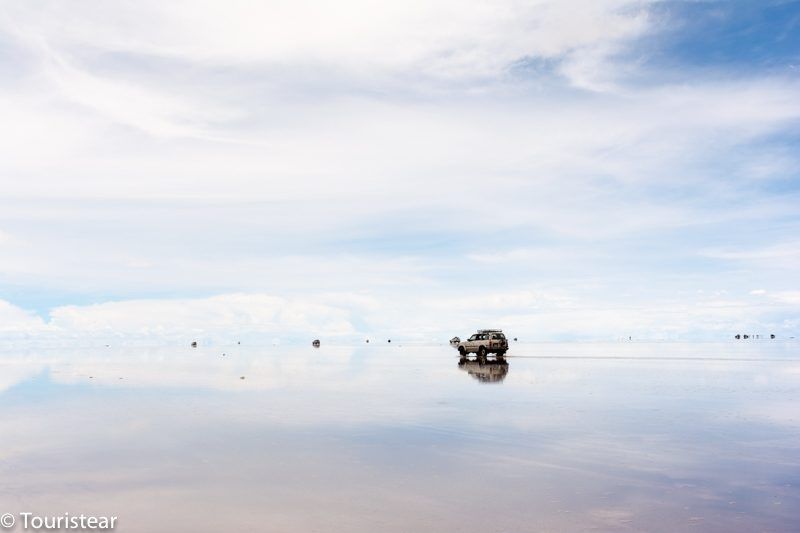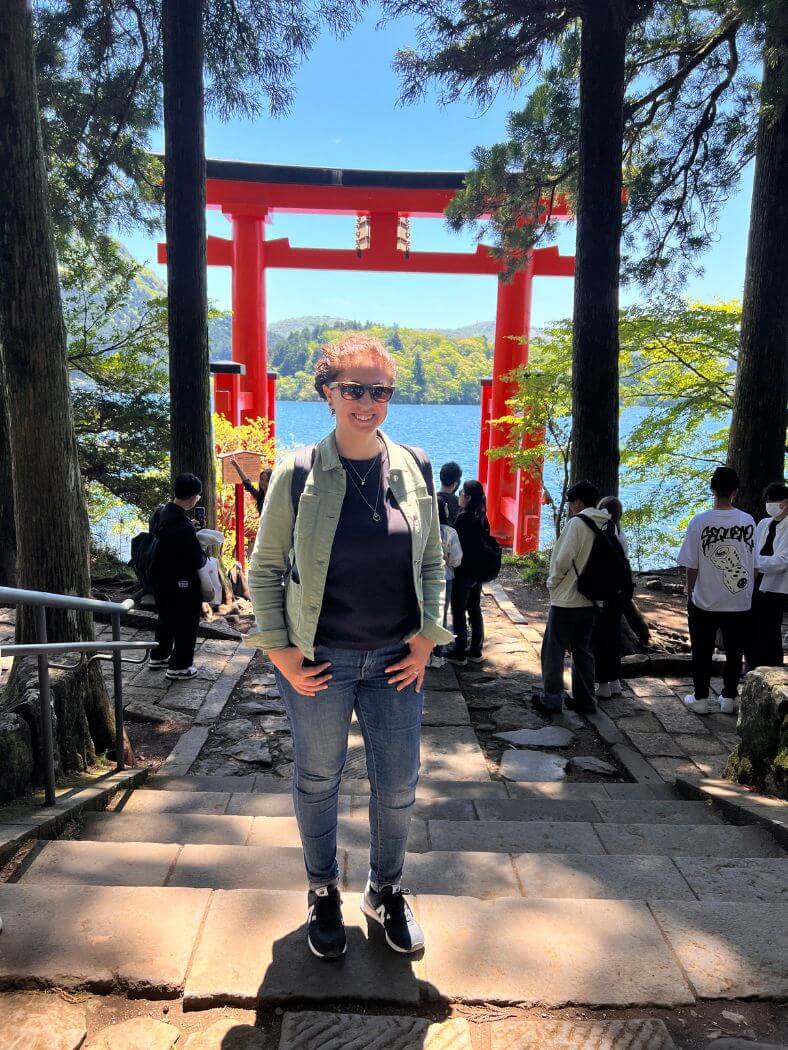How to Prevent Altitude Sickness in Your trips
Altitude sickness is our body’s response to the lack of oxygen levels that occurs when you’re in places that are higher than 2500 meters above sea level.
It’s not really that there’s less oxygen at a higher altitude; what happens is that it lowers atmospheric pressure and the oxygen pressure in the air we breathe.
Recommendations to Prevent Altitude Sickness

People who suffer the most symptoms are those who normally live below 1000 meters of altitude. The closer the sea level you live, the more likely you will be affected by altitude sickness.
But in this post, we want to tell you what the symptoms are and what interests you most, such as what steps you can take to prevent altitude sickness on your trips.
If you plan to travel to Machu Picchu in Peru or the Salar de Uyuni, read on and pay special attention to many other high-altitude destinations.

Who is affected by altitude sickness?
As I told you above, it usually affects people living less than 1000 meters above sea level.
But the truth is that it affects different people in different ways. It also depends on how you get to your destination.
I mean, if you’re doing a high mountain route and you go up very fast, it will affect you differently if you go to Cuzco (3399msnm) by bus from Lima (at sea level).

Also does not distinguish people’s physical condition. That is, even if you are in great shape, altitude sickness can affect you in the same way as a person who doesn’t sport.
What are the most common symptoms of altitude sickness?
Symptoms can begin to be felt from 2500 or 3000 meters of altitude. And one of the factors that highly influence its effects is the speed of ascent and the lack of acclimatization.
The most common symptoms are:
- Severe headache
- Physical fatigue or exhaustion
- Sleep disorder
- Nausea and vomiting
- Digestive disorders
- Agitation
- Lack of appetite
- Physical exhaustion
To avoid and prevent altitude sickness, follow the following tips
Acclimatization:
If you’re thinking of traveling to a place that is more than 2500 meters in altitude, it is best to acclimatize to not suffer from altitude sickness.
To do this, you have to make the ascent gradually; you don’t have to agitate or make physical efforts, at least for the first few days. It’s best to walk slowly and stop to rest when necessary. It is also recommended to sleep well, eat light and avoid alcoholic beverages.
To prevent altitude sickness in South American countries, drinking coca tea and/or chewing coca leaves is recommended.

Coke tea
The coca tea is quite good and is what the locals recommend; if you tell them you take pills for the “soroche,” they will look at you funny, lol.
Coca leaves are not literally chewed; what they do is stick them inside your cheek and let them take effect when mixed with saliva.
Being well-hydrated and resting
If you get any altitude sickness symptoms, it is best to rest and be well-hydrated. Alcoholic beverages should be avoided.
You need to see your doctor for more severe symptoms and always travel with travel insurance.
If you go to any city that is above 2000 meters above sea level, it is recommended that you take these precautions to avoid the symptoms of altitude sickness.

For example, during the tour of the Salar de Uyuni, you will be above 3600 meters above sea level and sometimes above 5000; it is advisable to do this tour, already being acclimatized to the altitude.
As it was my case that I had already been traveling in Peru and Bolivia from the north, and the altitude sickness did not affect me when I visited the Salar de Uyuni.
Still, I was slightly uncomfortable on the third day of the tour of Uyuni when we exceeded 5000 meters above sea level.
Suppose you have not been used to high altitudes before. In that case, it is better to take it easy, because in case you get bad, severe altitude sickness, you have to go back to an altitude where the altitude does not affect you, and that can annoy you, especially on a trip like that of the Salar de Uyuni, to give an example.
For Your Pinterest

Last Updated on 9 October, 2023 by Veronica
Disclosure: Some of the links on this post are affiliate links, meaning at no additional cost to you, I may earn a small commission if you click through and make a purchase.
Author: Veronica
Vero, a seasoned traveler, has explored 25 countries and lived in five, gaining a rich perspective and fostering an infectious passion for travel. With a heart full of wanderlust, Vero uncovers the world’s hidden gems and shares insights, tips, and planning advice to inspire and assist fellow adventurers. Join Vero and let the shared passion for travel create unforgettable memories.












